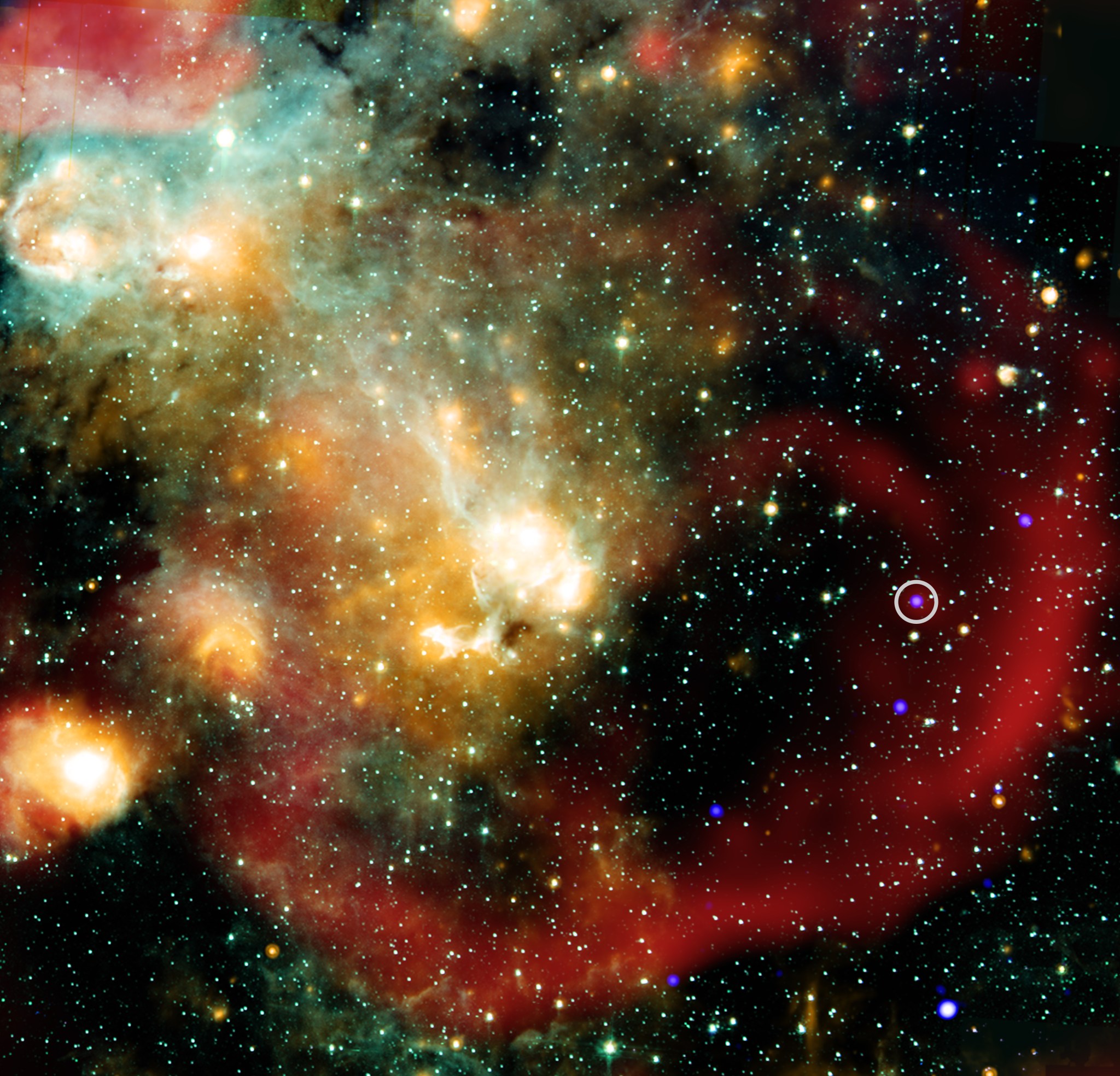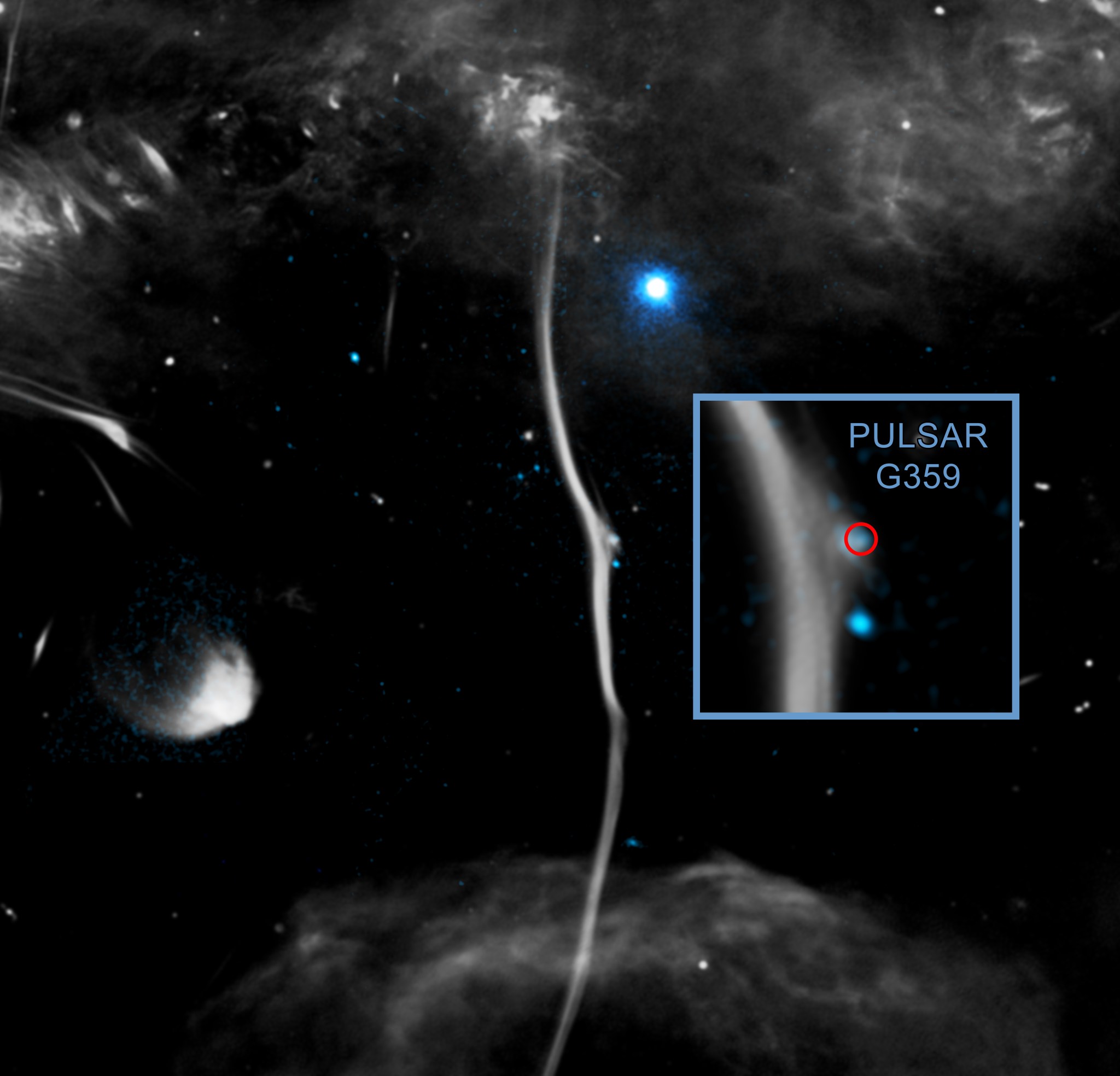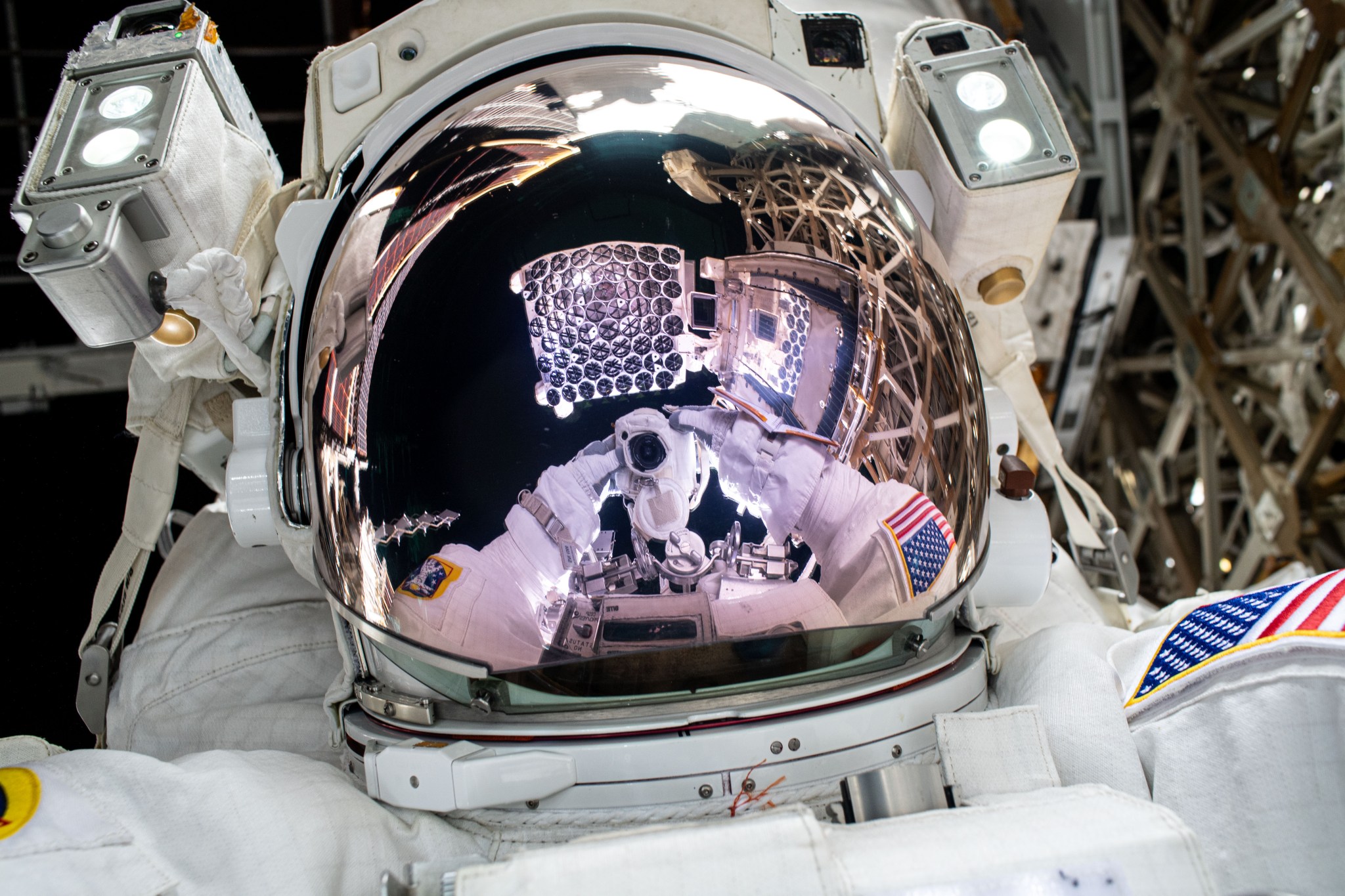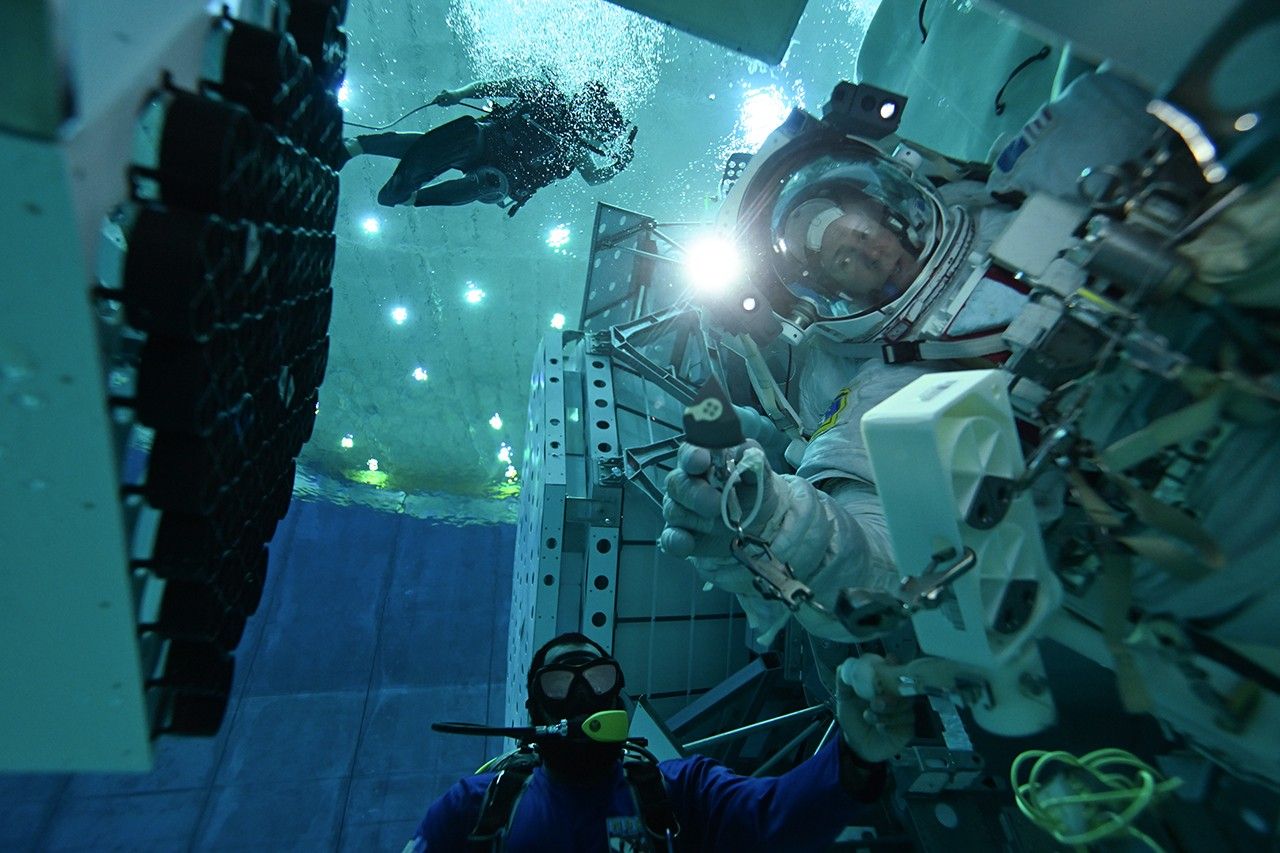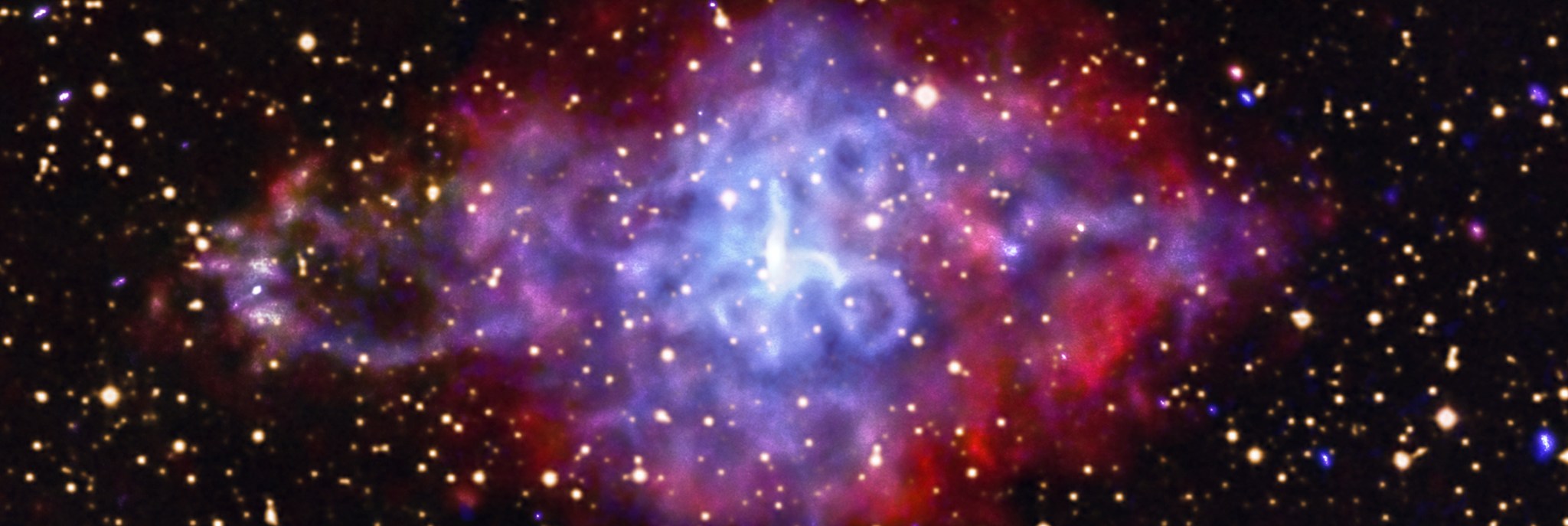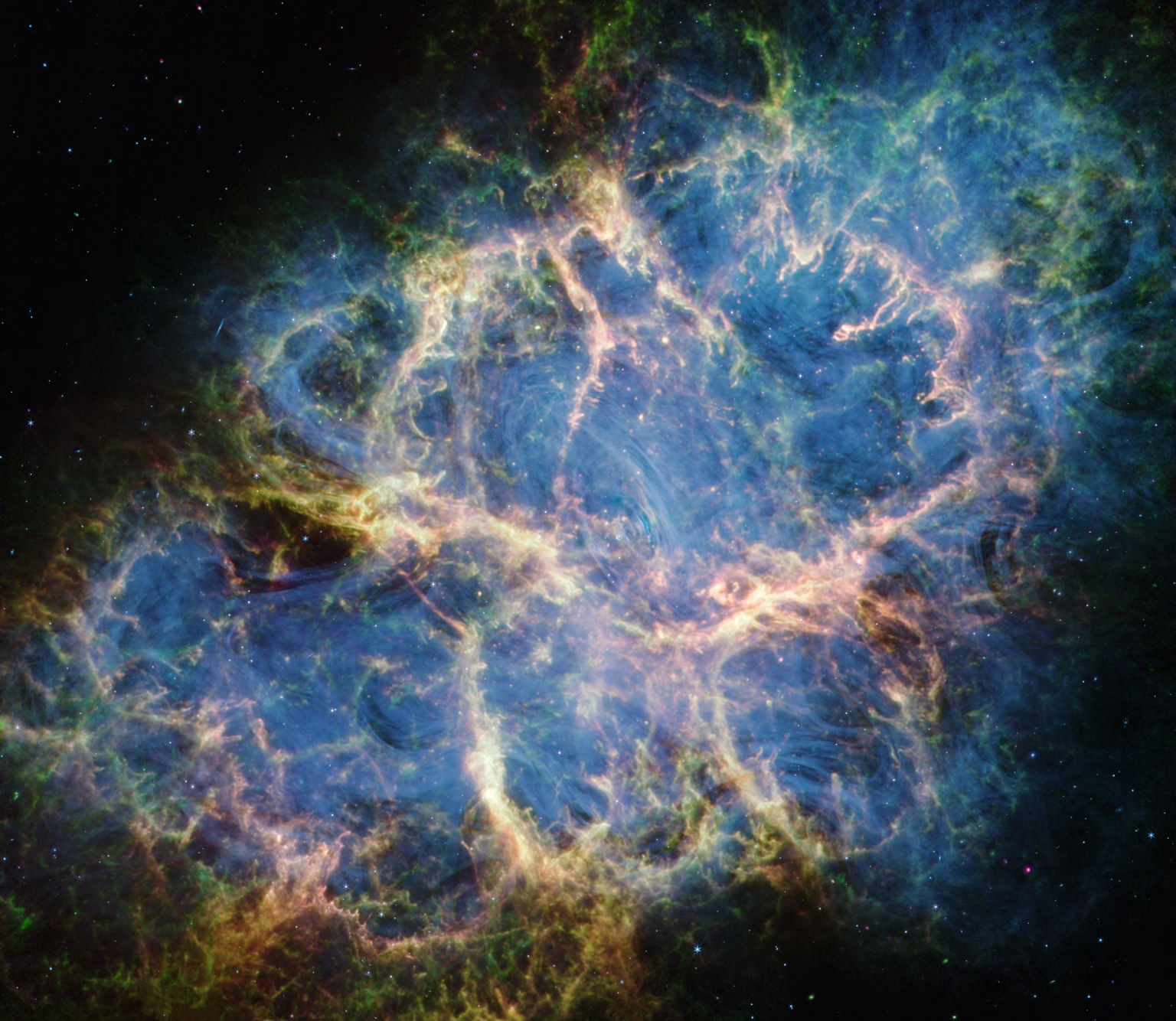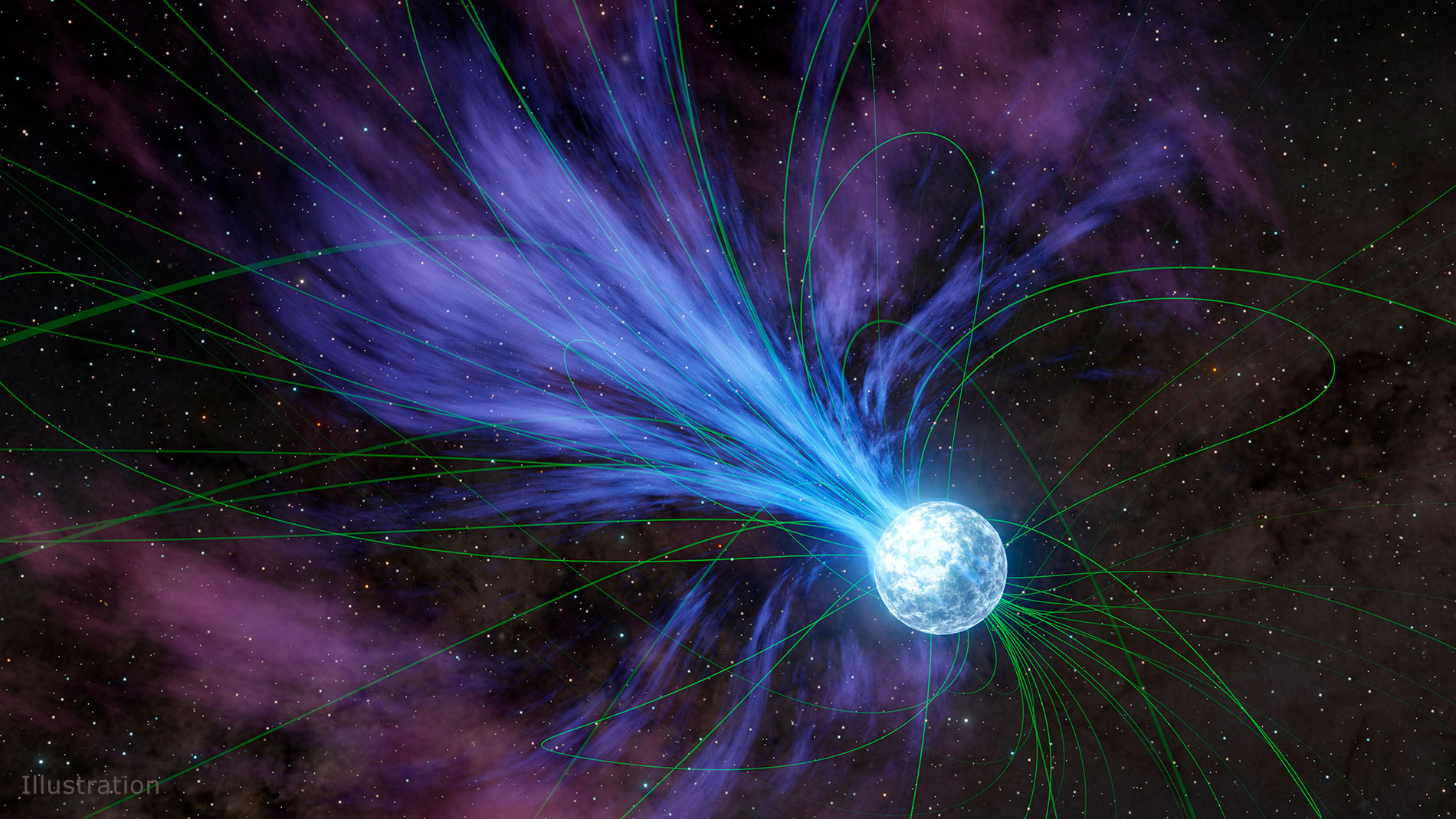X-ray: NASA/CXC/ICRAR, Curtin Univ./Z. Wang et al.; Infrared: NASA/JPL/CalTech/IPAC; Radio: SARAO/MeerKAT; Image processing: NASA/CXC/SAO/N. Wolk Scientists have discovered a star behaving like no other seen before, giving fresh clues about the origin of a new class of mysterious objects. As described in our press release, a team of astronomers combined data from NASA’s Chandra X-ray Observatory and the SKA [Square Kilometer Array] Pathfinder (ASKAP) radio telescope on Wajarri Country in Australia to study the antics of the discovered object, known as ASKAP J1832−0911 (ASKAP J1832 for short). ASKAP J1832 belongs…
Read MoreTag: neutron stars
NASA’s Chandra Diagnoses Cause of Fracture in Galactic “Bone”
X-ray: NASA/CXC/Northwestern Univ./F. Yusef-Zadeh et al; Radio: NRF/SARAO/MeerKat; Image Processing: NASA/CXC/SAO/N. Wolk Astronomers have discovered a likely explanation for a fracture in a huge cosmic “bone” in the Milky Way galaxy, using NASA’s Chandra X-ray Observatory and radio telescopes. The bone appears to have been struck by a fast-moving, rapidly spinning neutron star, or pulsar. Neutron stars are the densest known stars and form from the collapse and explosion of massive stars. They often receive a powerful kick from these explosions, sending them away from the explosion’s location at high speeds. Enormous structures resembling bones or…
Read MoreNICER Status Updates
April 17, 2025 Following Repair, NASA’s NICER Improves Daytime Measurements A NASA X-ray telescope on the International Space Station called NICER, or Neutron star Interior Composition Explorer, has regained additional daytime observation capabilities thanks to repairs completed during a spacewalk and a reconfiguration of its detectors. In May 2023, NICER developed a light leak in which unwanted sunlight began entering the instrument. Photos taken from inside the space station revealed several small areas of damage to the telescope’s thin thermal shields, which block sunlight while allowing X-rays through to the…
Read MoreAstronaut Set to Patch NASA’s X-ray Telescope Aboard Space Station
4 min read Astronaut Set to Patch NASA’s X-ray Telescope Aboard Space Station NASA astronaut Nick Hague will install patches to the agency’s NICER (Neutron star Interior Composition Explorer) X-ray telescope on the International Space Station as part of a spacewalk scheduled for Jan. 16. Hague, along with astronaut Suni Williams, will also complete other tasks during the outing. NICER will be the first NASA observatory repaired on-orbit since the last servicing mission for the Hubble Space Telescope in 2009. Hague and other astronauts, including Don Pettit, who is also currently on the…
Read MoreSix Ways Supercomputing Advances Our Understanding of the Universe
At NASA, high-end computing is essential for many agency missions. This technology helps us advance our understanding of the universe – from our planet to the farthest reaches of the cosmos. Supercomputers enable projects across diverse research, such as making discoveries about the Sun’s activity that affects technologies in space and life on Earth, building artificial intelligence-based models for innovative weather and climate science, and helping redesign the launch pad that will send astronauts to space with Artemis II. These projects are just a sample of the many on display in…
Read MoreRepair Kit for NASA’s NICER Mission Heading to Space Station
4 min read Repair Kit for NASA’s NICER Mission Heading to Space Station NASA will deliver a patch kit for NICER (Neutron star Interior Composition Explorer), an X-ray telescope on the International Space Station, on the agency’s Northrop Grumman 21st commercial resupply mission. Astronauts will conduct a spacewalk to complete the repair. Located near the space station’s starboard solar array, NICER was damaged in May 2023. The mission team delivered the patch kit to NASA’s Johnson Space Center in Houston in May 2024 so it could be prepped and packed…
Read MoreNASA’s Chandra Peers Into Densest and Weirdest Stars
Supernova remnant 3C 58. X-ray: NASA/CXC/ICE-CSIC/A. Marino et al.; Optical: SDSS; Image Processing: NASA/CXC/SAO/J. Major The supernova remnant 3C 58 contains a spinning neutron star, known as PSR J0205+6449, at its center. Astronomers studied this neutron star and others like it to probe the nature of matter inside these very dense objects. A new study, made using NASA’s Chandra X-ray Observatory and ESA’s XMM-Newton, reveals that the interiors of neutron stars may contain a type of ultra-dense matter not found anywhere else in the Universe. In this image of 3C…
Read MoreInvestigating the Origins of the Crab Nebula With NASA’s Webb
6 Min Read Investigating the Origins of the Crab Nebula With NASA’s Webb This image by NASA’s James Webb Space Telescope’s NIRCam (Near-Infrared Camera) and MIRI (Mid-Infrared Instrument) shows different structural details of the Crab Nebula. New data revises our view of this unusual supernova explosion. A team of scientists used NASA’s James Webb Space Telescope to parse the composition of the Crab Nebula, a supernova remnant located 6,500 light-years away in the constellation Taurus. With the telescope’s MIRI (Mid-Infrared Instrument) and NIRCam (Near-Infrared Camera), the team gathered data that…
Read MoreNASA’s Tiny BurstCube Mission Launches to Study Cosmic Blasts
4 min read NASA’s Tiny BurstCube Mission Launches to Study Cosmic Blasts BurstCube, shown in this artist’s concept, will orbit Earth as it hunts for short gamma-ray bursts. NASA’s Goddard Space Flight Center Conceptual Image Lab NASA’s BurstCube, a shoebox-sized satellite designed to study the universe’s most powerful explosions, is on its way to the International Space Station. The spacecraft travels aboard SpaceX’s 30th Commercial Resupply Services mission, which lifted off at 4:55 p.m. EDT on Thursday, March 21, from Launch Complex 40 at Cape Canaveral Space Force Station in…
Read MoreNASA Telescopes Find New Clues About Mysterious Deep Space Signals
6 min read Preparations for Next Moonwalk Simulations Underway (and Underwater) In an ejection that would have caused its rotation to slow, a magnetar is depicted losing material into space in this artist’s concept. The magnetar’s strong, twisted magnetic field lines (shown in green) can influence the flow of electrically charged material from the object, which is a type of neutron star. NASA/JPL-Caltech Using two of the agency’s X-ray telescopes, researchers were able to zoom in on a dead star’s erratic behavior as it released a bright, brief burst of…
Read More